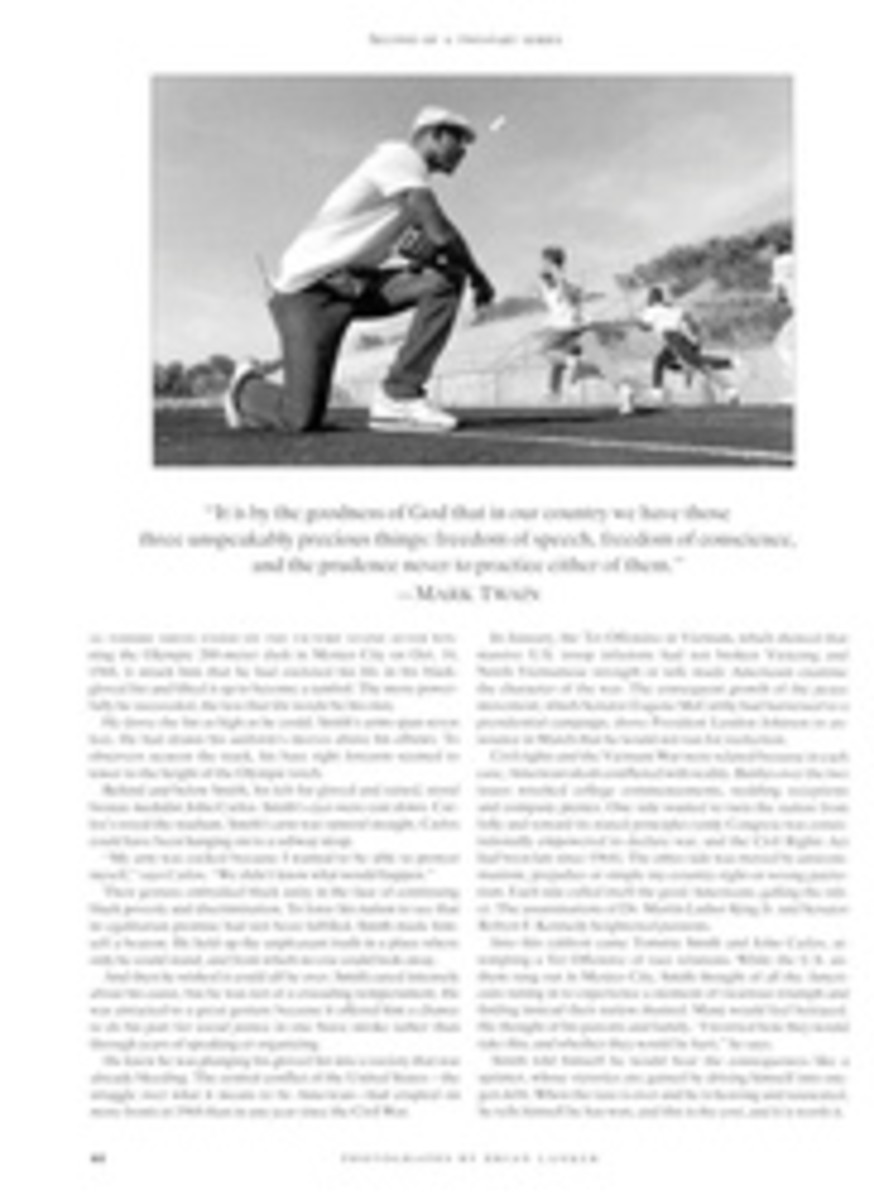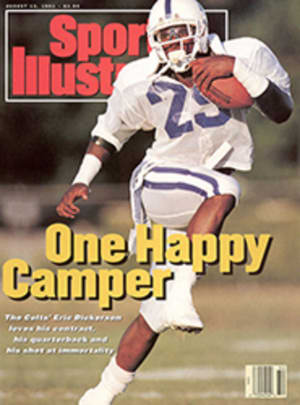
The Zuni Rediscover the Art of Running
When Bruce Leonard arrived at the Zuni Indian Reservation in Zuni, N. Mex., in March 1983, he faced a formidable challenge—a spreading diabetes epidemic. Leonard, a public-health educator with the Indian Health Service, an agency of the U.S. Department of Health and Human Services, hoped he could help the Zuni in their battle against the disease, which has run rampant in a number of Native American populations since the 1950s. By the early 1980s, one third of the adults in Zuni had developed Type II non-insulin-dependent diabetes, a rate seven times that of the non-Native American population in the U.S.
Leonard, 44, a marathoner with a master's degree in public health from the University of Hawaii, was convinced that what the Zuni needed to bring the epidemic under control was exercise. He began his campaign by contacting a group of diabetic patients who were being treated at the Zuni Public Health Service Hospital and inviting them to an aerobics class that he was planning to conduct in a local high school gymnasium. About a dozen of the patients politely agreed to attend the class. Not one showed up. Leonard sat alone for an hour with his tape player and a stack of disco tapes.
Before his next scheduled class, Leonard called and wrote the patients. Again he received assurances that they would come. None did. Over a period of three weeks, Leonard sat by himself through six straight classes. "As you can imagine, I felt less useful than I wanted to be," he says. But he stuck to the schedule, aware not only of the Zuni's shyness but also of their traditional belief that a robustly rounded physique was a symbol of success, a sign that one's status had risen above the necessity for physical exertion.
But the Zuni were also conscious of their medical situation. Finally, for Leonard's seventh class, one overweight Zuni woman showed up. For an hour she endured his aerobics routine—"boot-camp calisthenics to disco music," he recalls. For the next class, two days later, the woman brought a friend. Soon there were a handful of exercisers, and over the months, the word spread that the women were losing weight and feeling better. Zuni men began coming to the exercise sessions. Half a year after that somewhat hesitant start, Leonard had so many students that additional classes had to be added, taught by his wife, Carol. By the summer of 1984, Leonard had organized walking and running clubs, a weight-loss program, an Aerobics Challenge (in which point standings were charted for exercisers), a run-bike biathlon and a summerlong series of progressively longer road races. The umbrella title for the program was the Zuni Diabetes Project. As the participants worked themselves into shape, they learned new eating habits and gained control of their blood-sugar levels. Many Zuni were able to reduce or eliminate their diabetes medication.
The reformed diabetics became role models, and a cadre of Zuni have become aerobics instructors. Today, at the four-year-old tribal Wellness Center, headquartered in a wing of a high school, the gym is booked solid with exercise classes, and the weight-training equipment is in near constant use. The full-time staff of four health professionals monitors 12 certified Zuni instructors as they conduct 40 aerobics and circuit-training classes a week. Of the total population of 8,546 on the 400,000-acre Zuni Reservation, nearly 1,800 individuals are now involved in exercise programs.
Many have become dedicated runners. Phillip Vicenti, a 38-year-old computer systems analyst, found out he had diabetes five years ago. The 5'6" Vicenti weighed 188 at the time and had never been much of an athlete, but he had heard many Diabetes Project success stories, so he enrolled and started running. At first he could only plod a few hundred yards. Today, 26 pounds lighter, Vicenti makes regular five-mile runs, and his blood sugar is back down to normal. "These days you see people running in Zuni who you never thought you'd see running," Vicenti says.
This running movement takes on a particular irony because running was once an integral part of the Zuni culture, one of the tribe's most hallowed forms of self-expression. In a ceremonial event called the stick race, the best athletes once tested their spirit and stamina by running barefoot 25 miles or more through the sage and chaparral surrounding the Zuni pueblo while kicking small sacred sticks along the course. The sticks represented the toys of the tribal war gods, who were often depicted as tireless runners.
In previous centuries, the Zuni had always lived a vigorous, if sometimes precarious, existence. They hunted and farmed on the western slope of the Continental Divide in what eventually became New Mexico. They ate what they could kill and harvest: wild game, beans and other vegetables. Because there were periodic famines, their bodies developed the capability of storing above-average supplies of nourishment to tide them over the lean times.
With this century, particularly after World War II, came the widespread availability of store-bought, processed foods-new dietary choices such as cheeseburgers, soft drinks and ice cream. Hunting and farming were largely replaced by sedentary jobs such as jewelry-making. The genetic asset that had once helped the Zuni survive began working against them, and obesity became a common problem. It is also theorized that Native Americans, and their genetics, can be traced to Asia; as is true of other groups of Asian descent—the Maori of New Zealand and the Polynesians—the Zuni are prone to developing Type II diabetes. It was not long after the stick race had died out, in the late 1940s, that occurrences of adult-onset diabetes began to be noticed.
Even if their elders adopted a less strenuous life-style, the young people of the Zuni continued to run, as is attested by the cross-country state championship banners hanging in the Zuni High School gym—the Zuni boys' team having won the title 10 of the past 15 years, the girls' 8 of the past 10. But Leonard says that "after the students left the structure of the high school cross-country team, there was no community reinforcement of running, let alone any exercise."
Now, with the Diabetes Project, both are present. In 1990, more than 1,000 people—mostly Zuni, but also members of other tribes and non-Native Americans—took part in the Zuni Fitness Series, which runs one weekend every month from May to August. The final event of last year's series, a 25-mile relay run by five-member teams through the open range, drew 210 locals and visitors. A large Zuni crowd cheered the runners in a scene that would have made stick racers of previous generations proud, though perhaps perplexed by all the spandex outfits and Bart Simpson T-shirts.
The defending champions were the Zuni Tribal Runners, a team of past and present Zuni High cross-country stars-only one of whom is a member of a diabetes-free family. To the delight of the crowd, the first three Zuni runners built a 45-second lead over the Mesilla Valley Pacers, a team made up of runners from New Mexico State University. But the Pacers' Phil Apodaca, a former New Mexico Junior College standout who ran the fourth five-mile leg, closed fast on the Zuni's only woman runner, Dawn Eriacho, and gave the Pacers a lead they never relinquished. "I held him off for about a mile, then he sprinted past," said Eriacho with a smile. "He's kind of cute."
The Pacers finished the 25 miles in 2:24, seven minutes ahead of the Tribal Runners. The spectators cheered the winners as enthusiastically as they did the locals. Ron Hamelink, then an assistant professor of health at New Mexico State, ran the second leg for the Pacers. He was as impressed with what he saw in the streets of Zuni as he was with his own team's performance. "You can see that the Zuni really care about themselves—much more than the general population," he said.
At the awards ceremony, competitors received medallions, plaques and trophies as recognition of their running accomplishments and their help in promoting a healthier Zuni future. Having run his five miles for the cause, Vicenti, who had not missed a Fitness Series race in the four years since his diabetes was diagnosed, shook hands with his friends and considered the way his life has changed. "I always worked with my dad, who's a rancher, and I always thought that at this age I'd be doing the same thing, just working," he said. "Now here I am, running."
PHOTO
MICHAEL SCULLY
A wind-sculpted mesa was a spectacular backdrop for a 25-mile relay race.
PHOTO
MICHAEL SCULLY
Children also learn the joy of running—and of preventing diabetes.
PHOTO
STEVE NORTHUP
Leonard's patience in rekindling interest in running was a vital factor.
Jim Harmon is a frequent contributor to this magazine.

